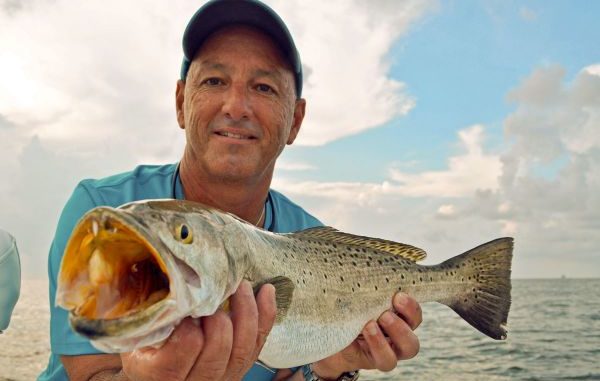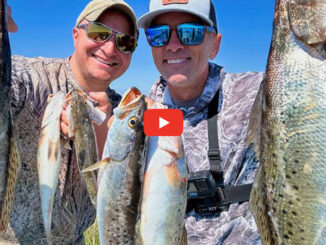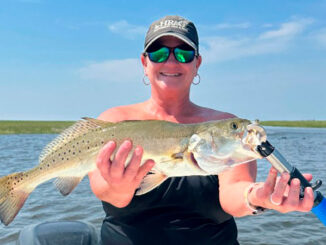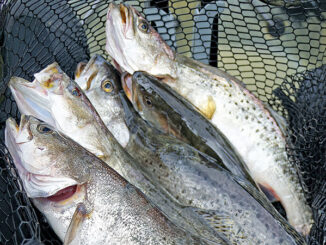
Tommy Vidrine’s speckled trout fishing calendar is broken into three segments, and how and where he fishes is different for each period.
• January through April — These months are the least-productive months for most Grand Isle trout fishermen. In fact, many Grand Isle regulars don’t even fish this period.
Vidrine fishes the ditches, lagoons and culverts along Highway 1 north of Grand Isle during this period. He also fishes from his boat, traveling to the marshes south of Golden Meadow.
His favorite lures are Gulp! soft baits fished under corks or Tsunami swim baits.
• May through September — Summers are considered by most to be the prime time for speckled trout fishing from Grand Isle. During this period, Vidrine shifts to live bait: shrimp, croakers, and pogies.
He calls shrimp the bait that he loves the most. Shrimp are free-lined after being hooked under the horn with a semi-circle hook.
Vidrine fishes shrimp around structure such a rock riprap, sunken barges off Fourchon beach and on the outsides of passes.
Vidrine’s use of croakers is opposite that of most big-trout fishermen, who as a group tend to prefer croakers over all other baits. Vidrine uses them only when shrimp aren’t available.
Croakers are fished in the same places as shrimp, and are free-lined. Croakers, being bottom fish, have a well-known tendency to dive into crevices in rocks, which doesn’t phase Vidrine a bit.
“That’s where I catch my big fish,” he said. “I break off a lot, but so what?”
In areas with strong currents, Vidrine hooks croakers through the upper jaw. In areas with little current, like open beaches, he hooks them through the back beneath the dorsal fin.
Vidrine also considers pogies to be a wonderful live bait.
“Trout can’t resist them,” he said.
The problem is they can’t be purchased at bait shops, so fishermen have to know how to find them (look for diving pelicans, he suggested) and they have to know how to throw a cast net.
Pogies can also be too big. Five inches long is too big. Three inches is just right. Vidrine always hooks them crossways their body near the anus and free-lines them. Often he adds a ¼-ounce split shot to the line above the hook.
Vidrine is particular about one piece of tackle when he fishes with live bait: his hooks. All he uses are 2/0 Owner Cutting Point SSW-style hooks. These wide-gap hooks are needle sharp and designed to cut into fish jaws rather than just poke a hole into them.
“They are expensive,” he admitted, “but you don’t miss a hook set. I pay $22 for a pack of 43 hooks.”
• October through December — In the fall, Vidrine shifts from live bait back to his favorite artificial lure, the Tsunami Swim Shad.
He is still fishing the “front,” with the back being defined as the bays and marshes north of the islands. Favorite places include East Timbalier, the Belle Pass rocks, and the Fourchon rocks and barges.
In October and November he also fishes the rocks at Caminada Pass.
The Fourchon barges, he noted in particular, hold fish all winter.


